Get a taste of springtime in Japan with this sakura mochi recipe! This classic Japanese wagashi (sweet confection) perfectly captures the essence of cherry blossom season with its subtle pink colour and delicate cherry blossom flavour. It’s made from mochi (rice cake) filled with smooth red bean paste wrapped in a pickled cherry blossom leaf and topped with cherry blossom flowers. This iconic treat is often enjoyed during special occasions such as Hanami (cherry blossom viewing) and Hinamatsuri (Girl’s Day).But we can also make sakura mochi at home to eat anytime and have a delicious and pretty treat all year round!

What is Sakura Mochi (桜餅)?
Sakura mochi is a traditional Japanese confectionery that is typically enjoyed during the spring season when cherry blossoms (sakura) are in bloom. It’s a popular treat to eat when celebrating Girl’s Day “Hinamatsuri” or for cherry blossom viewing called “Hanami”. It’s made from cooked sweet rice that’s coloured pink and shaped into an oval and filled with azuki red bean paste (anko). The mochi is then elegantly wrapped in a pickled sakura leaf and also often has a cherry blossom flower on top. It has a soft and chewy texture with a bit more bite to it than regular mochi because the rice isn’t fully squished. It has a unique sweet cherry-blossom flavour with a subtle saltiness.
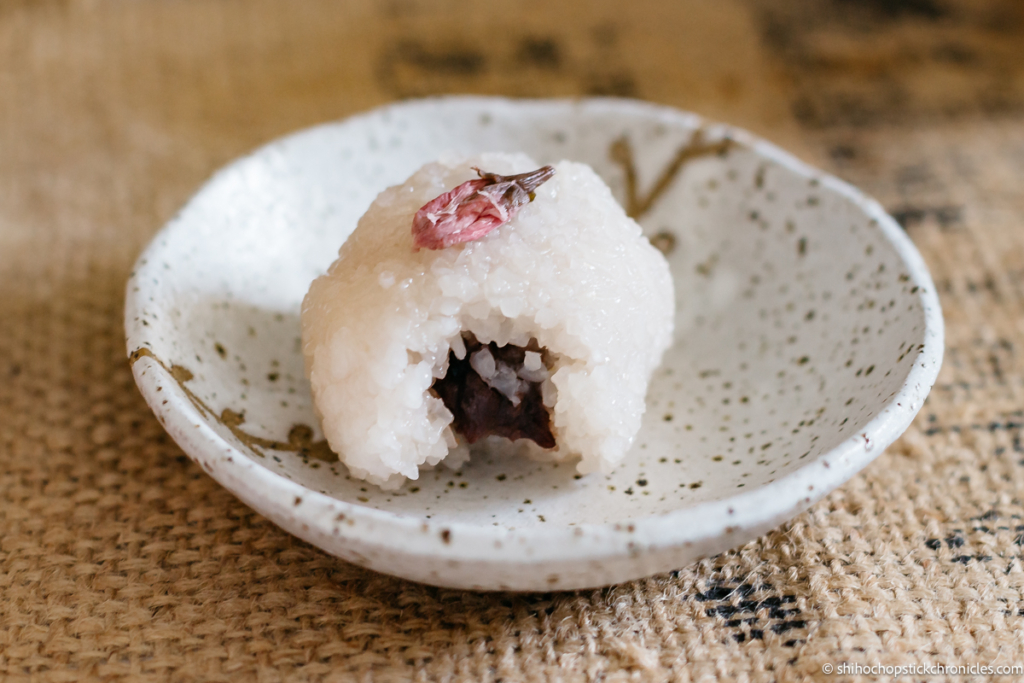
Varieties of Sakura Mochi
There are two main styles of sakura mochi in Japan coming from different regions – the Kansai region (western Japan) which includes Osaka and Kyoto; and the Kanto region (eastern Japan) which includes Tokyo. Both versions are quite different from each other.
Kansai-style sakura mochi is made with steamed and coarsely ground mochi rice called domyojiko. It’s made into an oval rice cake which is filled with sweet red bean paste. Kansai-style sakura mochi is therefore also known as Dōmyōji mochi as it uses domyojiko which was created at Dōmyōji temple in Osaka.
Kanto-style sakura mochi is made using a crepe-like dough made from wheat flour and shiratamako. The thin crepe is wrapped over ‘koshian’ (smooth strained azuki bean paste). It has the same cherry blossom flavour as Kansai style and is also wrapped in a sakura leaf but the overall texture is different.
I am from the Kansai region of Japan so this recipe is for Kansai-style sakura mochi.

What Main Ingredients do I Need for Kansai Style?
Here are the ingredients you’ll need to make Kansai style sakura mochi.
Dōmyōjiko
This is a special type of glutinous rice flour that forms the base of the mochi dough. It gives the mochi its chewy texture and slightly sweet taste. Dōmyōjiko is steamed glutinous rice that is dried and made into coarsely crushed rice flour so some chunks of rice remain. The domyoji flour used in the Kansai-style sakura mochi comes from Domyoji temple in Fujiidera City, Osaka.
Red bean paste (anko)
This sweet red bean paste made from azuki beans is used as a filling for sakura mochi. Tsubuan coarse azuki bean paste is used in the Kansai region, but if you prefer smooth red bean paste which is known as koshi-an, you can use it too. You can buy ready-made sweet red bean paste from Asian or Japanese supermarkets. However, anko can also be made easily from scratch following my sweet red bean paste recipe.
Pickled Cherry blossom Leaf
These preserved leaves add a subtle floral flavour to the mochi and are what adds to its iconic appearance. But although the leaves are an essential part of the dessert for its look, they’re not actually eaten. Make sure to peel off the leaf before eating.
Sakura Petal
A little salted and preserved cherry blossom flower is often placed on top of the mochi. This isn’t entirely necessary but it does add a cute decorative touch. These salted sakura flowers are edible and add a bit of a tangy flavour.
Salted Sakura Cherry Leaf, and salted cherry flower are available online.
Red Food Colouring
To achieve the pink hue of the mochi, the rice has to be coloured. You can use red food coloring or find a substitution below.

Ingredients Substitution
Making it authentically, we need domyoji-ko (道明寺粉), ‘anko’ sweet azuki bean paste, and cherry blossom leaves and flowers. However, I understand that when most of us live outside of Japan certain ingredients are hard to get. So we need to be creative to make Japanese things with the available ingredients.
Rice flour: Domyojiko can be substituted with glutinous or mochigome rice. The glutinous or mochigome rice needs to be soaked in a bowl of water overnight or for a minimum of 1 hour if you are in a hurry. Then the soaking water is drained and pulsed a few times in a food processor to crush the rice grain coarsely.
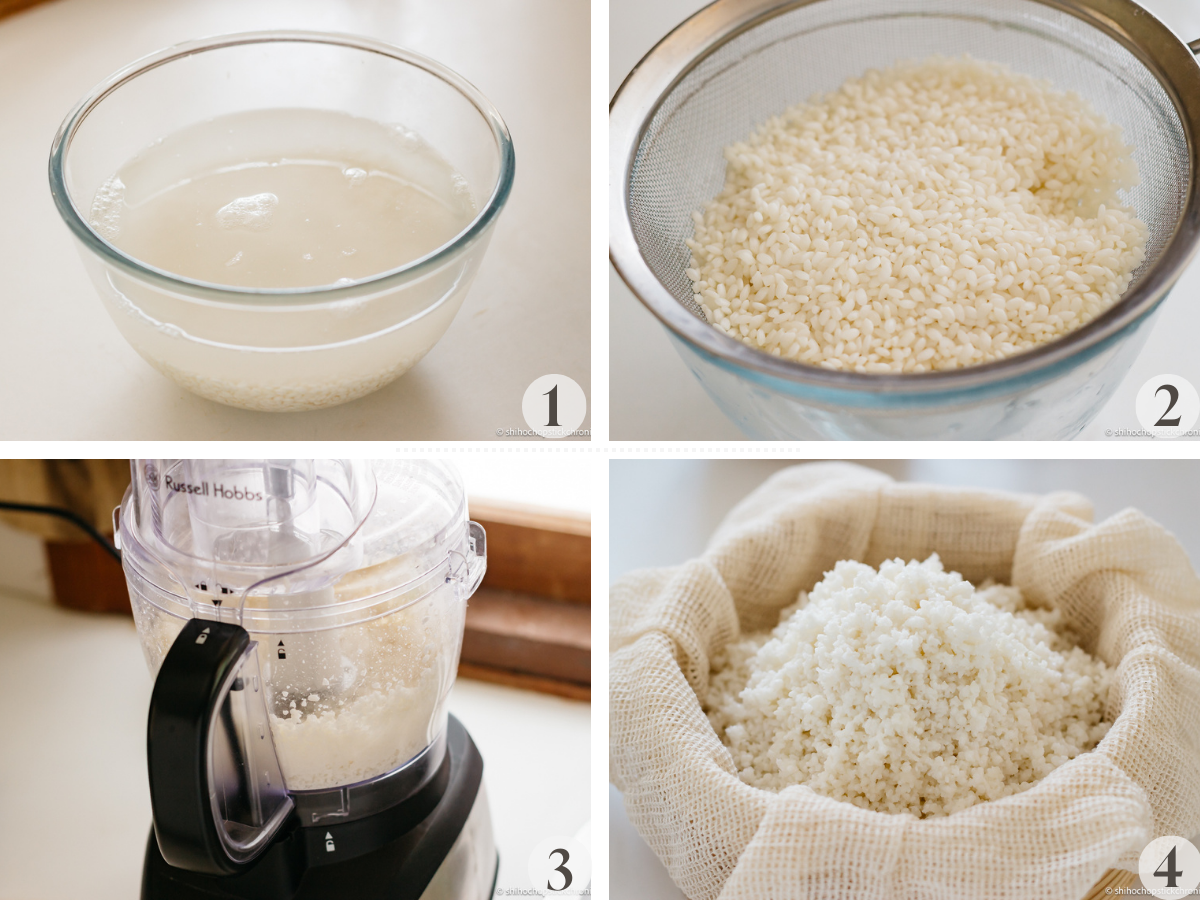
Red food colouring: In order to make it healthier and all-natural, the red food colouring can be replaced with beetroot juice. It doesn’t affect the flavour in any way so you won’t taste it at all.
Sakura leaves and flowers: these can’t be substituted with anything but they are mostly only decorative anyway so if you can’t get them anywhere then just leave them out.
Step by Step Instructions Making Sakura Mochi
Sakura mochi is not hard to make, but you need to start preparation the night before.
Night Before Preparation
You need to make anko balls (sweet red bean paste made into balls) and start to soak the rice the night before. Make anko paste if you are making from scratch following my recipe. Divide the anko (sweet azuki bean paste) into equal 6 portion with cling wrap and make it into small balls and store in a container (in the fridge if you live somewhere hot).

Day of Making Preparation
Soak the cherry leaves and cherry blossoms in water for about 20 minutes to remove the salt. Cut off the stems, spread them out on a paper towel, and cover with paper to keep them from drying out.

Making Sakura Mochi
- Place 1 tablespoon of water from the water listed in the ingredients in a small bowl and dissolve a tiny amount of red food colouring. You only need tiny amount of food colouring as when it is cooked, the colour intensifies, and we want a subtle pink like cherry blossom flowers.

- Pour the rest of water and the dissolved coloured water in pot and add sugar into the pot. Dissolve the sugar and then add the domyojiko into the pot.

- Cook the domyojiko over low medium heat for about 7-8 minutes by constantly stirring with a wooden spatula to prevent it from burning.

- Turn the heat off and put a lid on to steam with residual heat for 30 minutes.

- Divide the cooked domyojiko into 6 equal portions.

- Place 1/6 of the cooked domyojiko on plastic wrap brushed with syrup.

- Fold the plastic wrap over the domyojiko and flatten the rice into a round shape with your finger tips.

- Place one of the anko balls onto the flattened domyojiko and then wrap the domyojiko over the anko.

- Remove the plastic wrap and wrap it with a sakura leaf (wrap so that the leaf vein is on the outside, which is prettier) and top with cherry blossom flower bud.

- Repeat 6-9 steps for the rest of the ingredients.
If you want perfect sakura mochi, here are some tips:
- Use high-quality ingredients for the best flavour and texture for your sakura mochi.
- Handle the domyojiko (the steamed rice) while it is still slightly hot to make the sakura mochi because it will become more difficult to handle as it cools.
- When rolling out the domyojiko, make the edges a little thinner than the center so that when you wrap the strained red bean paste, the dough will not get too thick at the closed end and will come out neatly.
- Carefully and gently wrap the sakura mochi in pickled cherry blossom leaves to avoid tearing or damaging them as they are thin and fragile.
Serving and Enjoying Your Homemade Sakura Mochi
- Pair sakura mochi with a cup of matcha for a classic combination that perfectly balance each other.
- Hojicha is another type of Japanese tea that will go great with sakura mochi. The toasty notes of hojicha bring out the subtle sweetness of the sakura mochi.
- For a refreshing option, eat the sakura mochi with a cup of mugicha (barley tea). This tea is usually enjoyed chilled/iced so it’s the best choice for warmer spring days.

FAQ
Q1. Can we eat sakura leaves and flowers?
A: The unique fragrance of Sakura Mochi comes from the scent of coumarin contained in the salted leaves. You can eat cherry leaves with caution and avoid eating excessively. The Japanese Wagashi Association recommends not to eat sakura leaves. So in short, it is just for fragrance.
Q2. How long does mochi last and can you freeze them?
A : It will last for 1-2 days at room temperature. You can wrap them individually with plastic wrap and place them in a ziplock freezer bag. You can keep them for a month in the freezer. Thaw them naturally at room temperature when ready to eat.
Sakura mochi is a traditional Japanese confection made with sweet glutinous rice and cherry blossom leaves. It's the perfect springtime treat!
Prep Time 20 minutes
Cook Time 30 minutes
Total Time 50 minutes
Servings: 6 mochi
Sakura Mochi
- ▢ 150 g sweet azuki bean paste *1
- ▢ 100 g Domyojiko *2
- ▢ 160 ml water
- ▢ 20 g sugar
- ▢ tiny amount red food colouring
- ▢ 6 pickled cherry blossom leaf
- ▢ 6 salted sakura flower buds
Sugar syrup for shaping mochi
- ▢ ½ tsp gelatine leaf Or 1/2 gelatine leaf 1.2 x 1.2 inch (3cm x 3cm)
- ▢ ¼ cup water
- ▢ ⅛ cup sugar
Domyojiko Substituion *3
- ▢ 1 cup glutinous rice *4
- ▢ ½ cup water
- ▢ ¼ cup sugar
Preparation
Soak the cherry leaves and cherry blossoms in water for about 20 minutes to remove the salt. Cut off the stems, spread them out on a paper towel, and cover with paper to keep them from drying out.
Make the sugar syrup for shaping by putting all the ingredients in a saucepan and bring it to simmer. When the gelatine has dissolved, turn the heat off.
Making Sakura Mochi
Place 1 tablespoon of water from the water listed in the ingredients in a small bowl and dissolve a tiny amount of red food colouring. You only need a tiny amount as when it is cooked, the colour intensifies, and we want a subtle pink like the colour of cherry blossom flowers.
Pour the rest of the water and the dissolved coloured water into a pot and add sugar into the pot. Dissolve the sugar and then add the domyojiko into the pot.
Cook the domyojiko and the water over low-medium heat for about 7-8 minutes by constantly stirring with a wooden spatula to prevent it from burning.
Turn the heat off and put a lid on to steam.
Divide the cooked domyojiko into 6 equal portions.
Brush some plastic wrap sheet with the sugar syrup and place 1/6 of the cooked domyojiko over it.
Fold the plastic wrap over the domyojiko and flatten the rice into a round shape with your finger tips.
Place one of the prepared anko balls and wrap the anko ball with the cooked pink domyojiko.
Remove the plastic wrap and wrap it with a sakura leaf (wrap so that the leaf vein is on the outside, which is prettier) and top with a cherry blossom flower bud.
Repeat 6-9 steps for the rest of the ingredients.
Domyojiko Substitution with Glutinous Rice *3
Wash and soak the rice in 2 cups of water (not listed in the ingredients list) overnight. *5
After the rice is soaked overnight, drain the rice and pulse the rice a few times in a food processor.
Steam the rice for 30 minutes over medium heat. *6
Place the water and sugar in a saucepan. Bring it to boil to dissolve the sugar. Add a tiny amount of red food colouring. Transfer the sugar water to a large bowl and set aside.
Add the steamed rice to the large bowl with pink colored sugary water. Stir the rice with a wooden spatula to let the rice absorb the pink coloured sugar water.
Divide the rice into six equal portions.
*1 See the above post, if you are making from scratch, you need to do this the night before. Homemade Anko recipe here
*2 If you can’t get Domyojiko. and you are substituting Domyojiko with mochi rice follow this step. *3 Domyojiko Substitution with Glutinous Rice instruction.
*4 US cups (240ml) or you can weigh 200g.
*5 You need to soak for a minimum of 2 hours. You can see the rice become a solid white colour.
*6 Or you can cook rice as you usually cook rice with your rice cooker. You need the same amount of water as the amount of rice that you use.
*Salted sakura flower and leaves are not calculated into the nutrition value.
Calories: 173kcal · Carbohydrates: 40g · Protein: 3g · Fat: 1g · Saturated Fat: 1g · Sodium: 5mg · Potassium: 26mg · Fiber: 1g · Sugar: 12g · Calcium: 4mg · Iron: 1mg
Course: Dessert
Cuisine: Japanese
I want to see it! Tag @chopstickchronicles on social media!
Chopstick Chronicles is a participant in the Amazon Services LLC Associates Program, an affiliate advertising program designed to provide a means for sites to earn advertising fees by advertising and linking to Amazon.com. As an amazon associate I earn from qualifying purchases.
The site and our mobile application may contain links to affiliate websites. We receive a small affiliate commission for any purchase made by you on the affiliate website using such links. Read our disclosure policy.

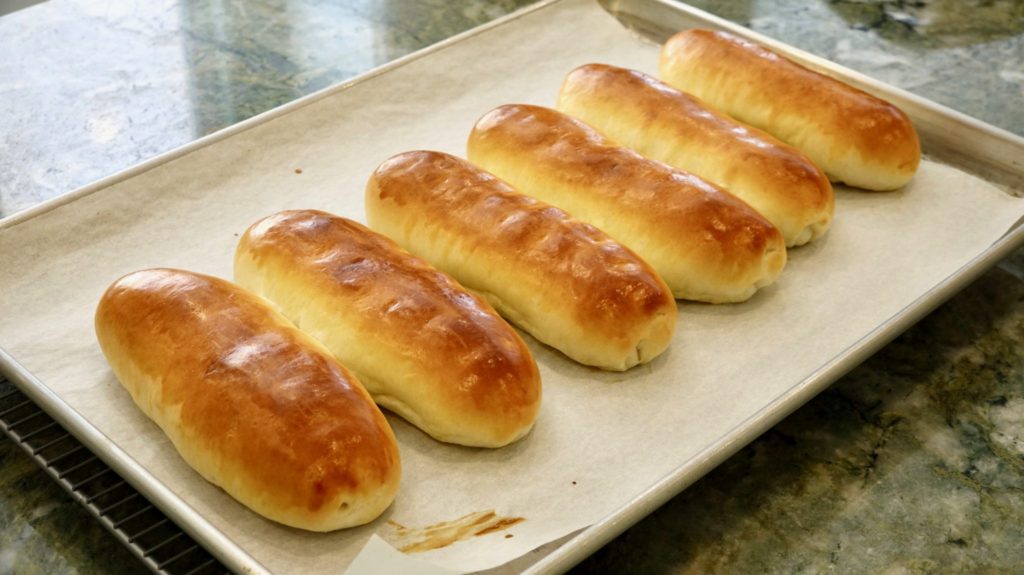

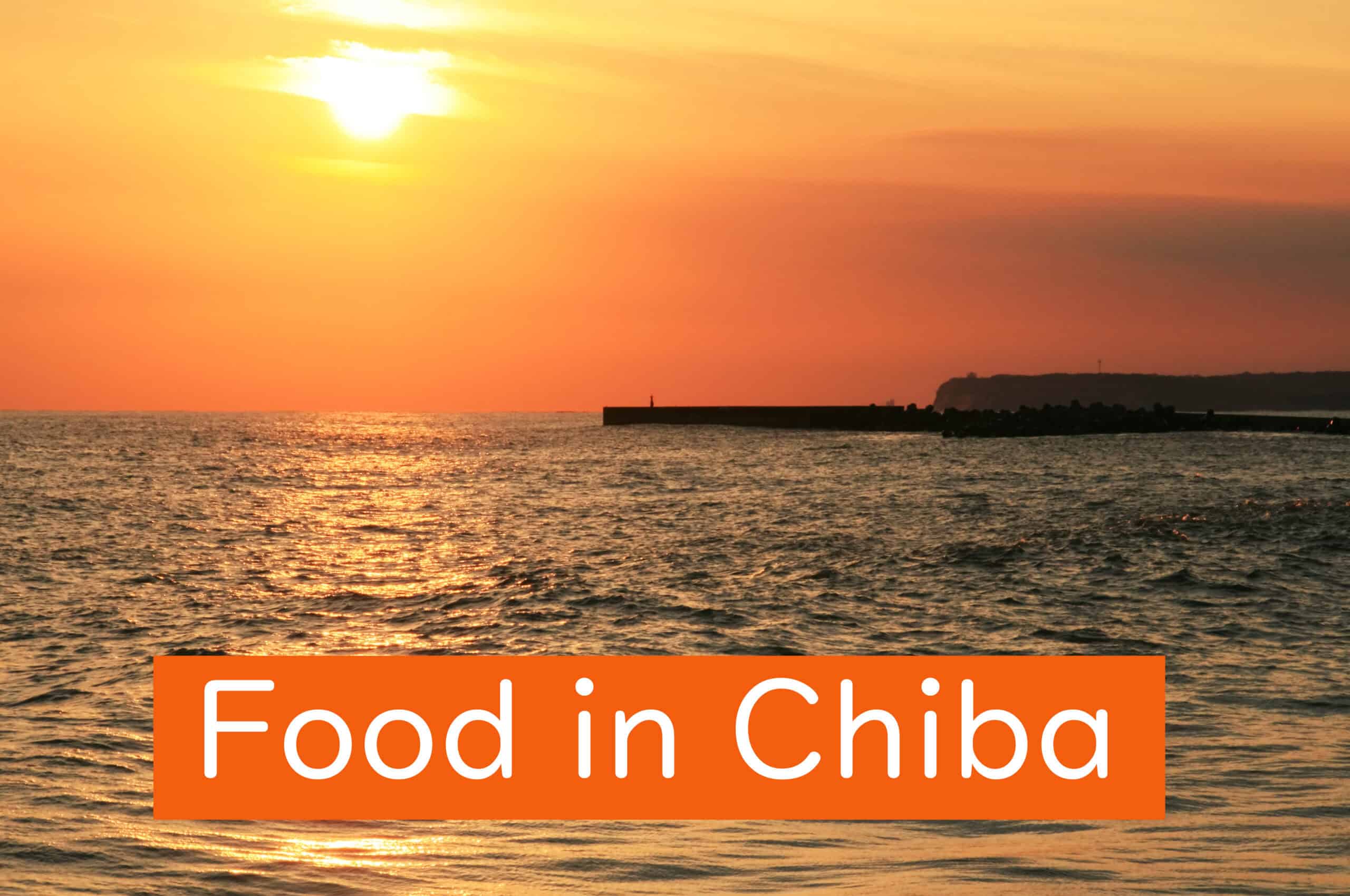


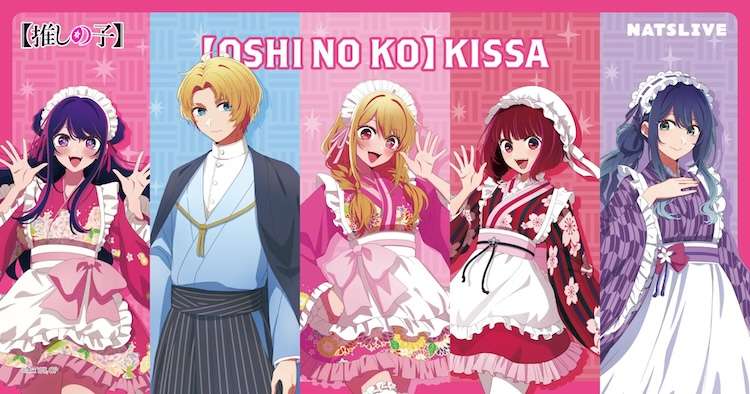


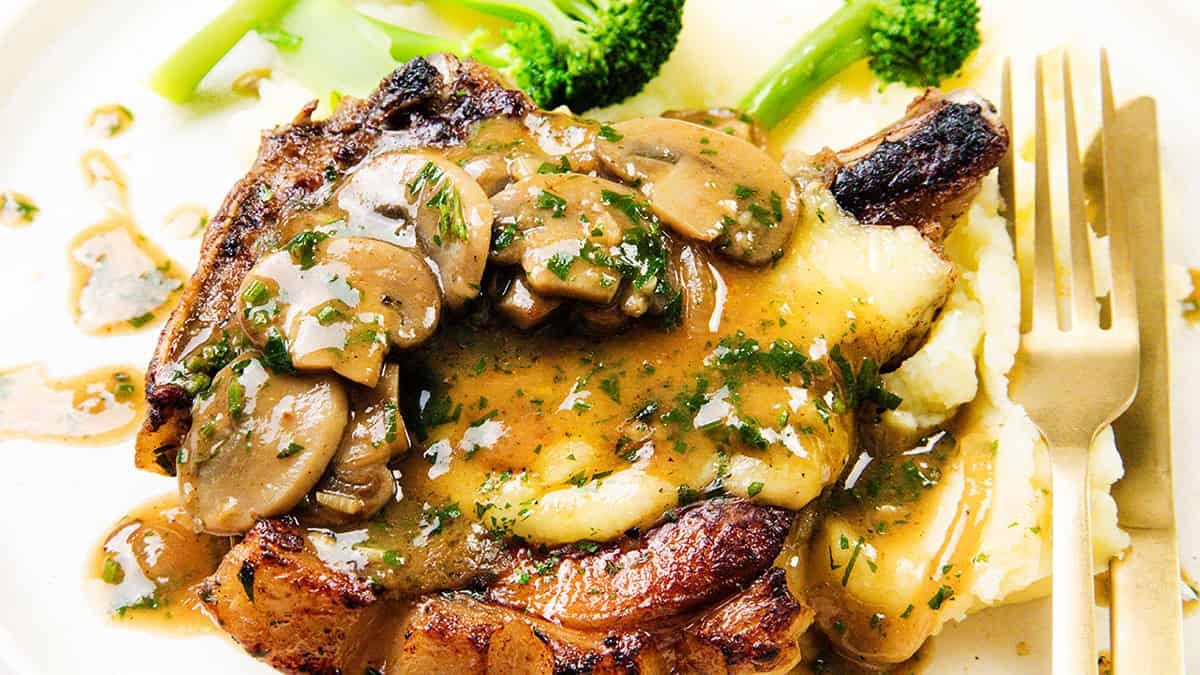

 English (US) ·
English (US) ·